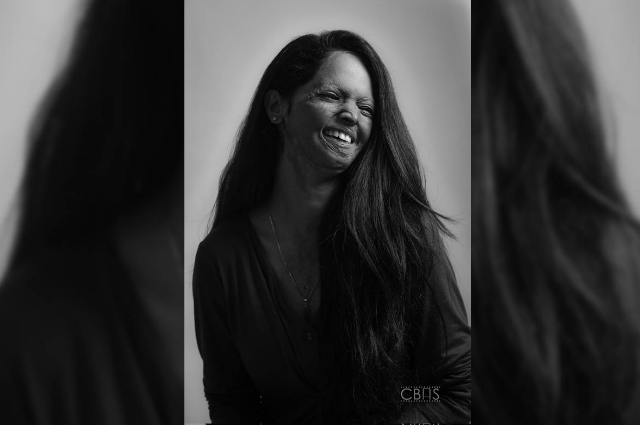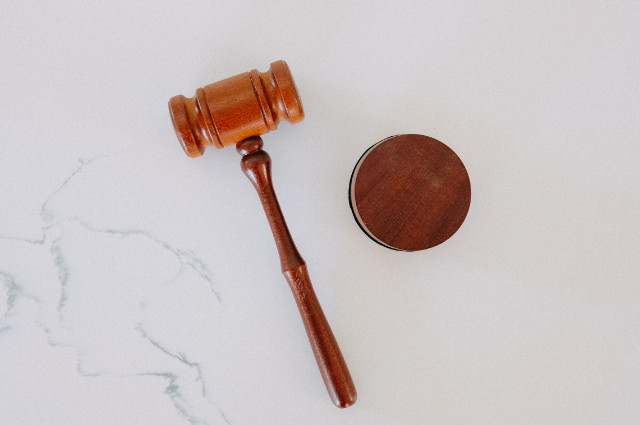Introduction
A few days back a 17-year-old girl was attacked by three attackers in Delhi's Dwarka neighborhood with an acid-like substance. The culprits had been detained by Delhi police, but the victim had sustained 8% burns with facial and neck deformities. The tragedy had once more brought to light the horrifying crime of acid attacks and the widespread accessibility of corrosive chemicals.
Acid throwing is a type of violent assault that is described as the conduct of throwing acid or some other equally toxic liquid against another person's body “with the goal to disfigure, maim, torture, or kill.” The victims of these attacks are typically attacked on the face with dangerous chemicals that burn and harm skin tissue, frequently exposing and possibly breaking the bones. While acid attacks happen in different places around the world, South Asia is where they happen most frequently.

Image by Brian Penny from Pixabay
Acid violence, which is frequently considered a crime of honor, can be understood as the intentional use of acid throwing with criminal intent to harm another person. The National Commission of India defined acid attack as “any act of throwing acid or using acid in any form on the victim with the intention of or with the knowledge that such person is likely to cause to the other person permanent or partial damage or deformity or disfiguration to any part of the body of such person”
Rise of acid attacks in India
India has the worst annual rate of acid attacks in the world, and even after the administration and apex court of India took action, crime is increasing. This rise can be traced to both India's widespread patriarchal mindset and its faulty legal system, which fails to provide victims with effective solutions. This article will explore the frequency of acid attacks in India, the causes of the attacks, the effects on the victims, and the various judicial interpretations taken up by the court to stop the crime and compensate the victims.
NCRB Data and reasons for such attacks
Attacks with acid represent a serious threat. It is a worldwide problem. It has increased during the past ten years in India. Most of the victims of such an attack are female. Even though acid attacks can be performed against either a man or a woman. The majority of the acid attacks had been conducted against women, for refusing pursuers, rejecting a marriage proposal, rejecting dowry, etc. The attacker, unable to accept his rejection, tries to harm the victim since she dared to oppose him.

A crime against a woman is perpetrated every three minutes, based on the National Crime Records Bureau of India which reports that documented cases of crime against women surged 6.4% in 2012. More than 228,650 instances of crime against women were registered in 2011 according to the National Crime Records Bureau while over 300,000 instances were reported in 2015, a 44% rise. 7.5% of the women in India reside in West Bengal, where 12.7% of all recorded crimes against women are committed. 7.3% of women in India live in Andhra Pradesh, which also has 11.5% of all recorded crimes against women.
In such attacks, hydrochloric and sulphuric acids are primarily utilized the long-term effects of these attacks include lasting scars on the body and face as well as blindness in some victims. The reason for 78% of acid attacks is turning down a marriage proposal or engagement.
According to data from the National Crime Record Bureau, there were 202 attempts to carry out similar attacks in the year 2016 as the girls' attack and there were 187 acid attacks in all 50 states. There were 19 attacks and 23 attempts in Delhi alone that year, compared to 6 attacks and 13 attempts in Punjab. These attacks can be linked to a number of socio-economic issues. One encounters such assaults where brides are set on fire on a daily basis. When examining the causes, it becomes clear that these attacks are being motivated by social considerations, particularly unequal marriages, dowry, and similar issues.
Consequences of Acid attacks
Acid attacks have significantly increased in recent years. It is a type of violence and it is very concerning that the victim will continue to experience pain. In reality, the victim's skin and even bones have been damaged, and the results are sometimes uneven, strange, and frightening scars on the victim's skin. The initial organ of contact and the major area of burning during an acid attack is the skin. If acid is inhaled, there is a feeling of shock and possibly, death or even lung diseases might follow.
Physical effects are not always more painful or severe than psychological ones. Not just the victim, but also the victim's family, is deeply impacted. Trauma grips the victim as well as society as a whole and has a profound effect on the general population. The victim experiences psychological frustration when she believes that her skin has been burned off, as well as after the attack as they are scarred and also have impairments they must live with for the rest of their life. Every moment the woman appears in the mirror, she is informed of both her existing insecurity and the lack of hope for the future, which throws her life off track. The conventional and traditional Indian viewpoint places more value on outer appearance than on inner beauty. In addition to this, society views the victim as an ‘alien’. This in turn casts a negative light on her independence and movement.

Due to their multiple problems, including blindness, deafness, and other challenges, the victims who are not married are unlikely to be married because our society's mentality is not sufficiently open to accepting a disabled person as their wife. Even though they are qualified, they are not hired because they are unable to live up to their employers' expectations due to a lack of ‘personality.’ Because we dislike staring at their faces for too long, we commiserate with them rather than offering to make their lives easier. This strategy needs to be altered though, as the violent monsters that are permitted to wander throughout society are to blame for their suffering, not because they did anything wrong. As rightly quoted by Laxmi Agarwal, “You can't bear to look at us but we don't have the money to buy ourselves new faces. My friends - yes, I've made new friends and they are all acid victims - are mostly blind.”
As a result, it can be argued that the survivors of acid attacks experience torture and also that their lives turn worse than death. Their physical wounds serve as continuous reminders of the traumas inflicted upon them and a sense of worthlessness and loneliness never leaves them.
Important Acid attack cases that brought changes
Laxmi, a 26-year-old Delhi resident who had survived an acid attack. In 2005, when she was awaiting a bus on Tughlaq Road, two men threw acid at her. Perhaps one of her attackers was angry at her refusal to marry him, and as a result, he permanently harmed her. Her entire face was severely burned by acid. She already had seven operations, and she still requires four more to restore her physical appearance to how it was once. She was from a low-income household and would never have been able to pay for her treatment if a generous donor hadn't covered her around Rs. 2.5 lakhs in medical costs.

Laxmi will never look the same, but she continues to be a motivation to all women who have suffered from the acid assault. She maintained her bravery and spoke out against acid violence by collecting 27,000 signatures for a petition asking India's Supreme Court to restrict the trade of acid. In addition to requesting damages, her PIL called for the creation of new legislation or changes to current criminal statutes such as the Indian Evidence Act, the Criminal Procedure Code, and the Indian Penal Code. She had also argued for a complete prohibition on the selling of acid, citing an increase in these attacks on women nationwide. Her petition was the foundation for the Supreme Court's landmark ruling on limits.
In the famous case of Laxmi v. Union of India, the supreme court provided guidelines for regulating acid in the states and union territories. The Supreme Court made its ruling in this case based on Section 357-A, which allows for the creation of a plan to collect funds for the purpose of compensating a victim or their dependents who have suffered something.
It was requested that the top court in Parivartan Kandra v. Union of India PIL provide relief by free medical treatment, rehabilitation services, or suitable compensation under survivor incentive schemes. Despite the rulings and directives in the Laxmi case, the supreme court expressed regret that acid was still easily accessible to individuals in India. In this historic decision, the Supreme Court ordered that not all State Governments and Union Territories must make sure that while in private hospitals, treatment for acid attack victims is refused along with the additional costs for medications, food, bedding, and surgery. In addition to all of these rulings, the Supreme Court stated that delivering acid without sufficient authorization was a serious matter for which the guilty parties or officials should be held accountable.
Conclusion
The most terrible and typically gender-specific form of violence used is acid attacks. Even though there have been reports of acid assaults all around the world, India has seen an increase in these cases. Although the start of the acid attack law revisions is encouraging, there is still a long way to go until these provisions are effectively put into action. Although it is acknowledged that new laws need some time to resolve and are later modified by the activity of the court, a few of the initial weaknesses need to be corrected. In the perspective of fact, the existing acid attack laws and legal approaches to the level of injuries are severely limited.
The compensation should be sufficient to cover the cost of quality medical care and rapid resolution from government institutions. The creation of new rehabilitation is another crucial factor that needs to be taken into consideration right away. The victims of such crimes should be given better work possibilities, training, etc., so they can at least support themselves daily. To stop acid attacks, some actions can be performed. Women should step out to help the victims of acid attacks. A further beneficial measure might be for the media to handle these cases with greater maturity and sensitivity. We sincerely hope that the horrific state of the judicial system regarding acid attacks can be addressed. Since many accused persons in India take advantage of the lengthy trial process, the government must enforce severe punishment and shorten the trial process.
References
- https://www.google.com/url?
- https://www.google.com/url?
- https://timesofindia.indiatimes.com
- https://indianexpress.com
- https://www.vagabomb.com
- https://www.google.com/url?
- https://papers.ssrn.com
- https://www.ijlmh.com
- https://www.probono-india.in
- https://probono-india.in
- https://clpr.org.in
